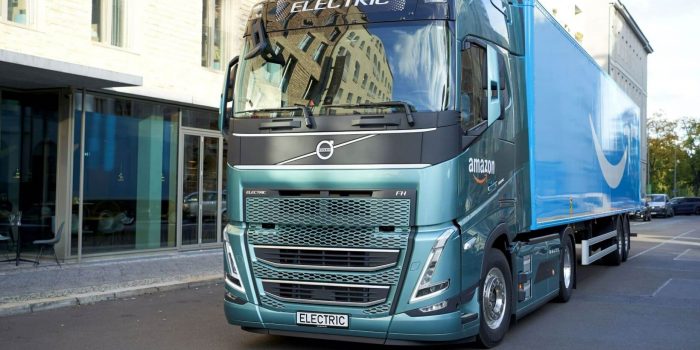For a time it looked like the diesel powered engine was doomed. The Washington D.C. Green New Deal proposal and the Davos WEF crowd were espousing their hatred of carbon producing fossil fuels to the point of shutting down power producers from the U.S. to Germany.
But, it turns out, not only is the world ill-prepared to replace diesel semis and lorries (the U.K. term) and the diesel engine parts required to maintain them anytime soon, but it appears that diesel semis are going to be manufactured at least until 2040.
According to a new a report by EURACTIV, big trucks and semis that run on fossil fuels like diesel will continue to be manufactured beyond what was thought to be a 2035 deadline. The new alleged phase out extends into the 2040s at the very earliest, or so states a proposal by the European Commission on revised CO2 emission standards for heavy-duty trucks, semis, lorries, and all varieties of machinery and equipment.
When it comes to vans and cars, EU institutions along with some U.S. largely political organizations came to an agreement in 2022 to reduce tailpipe CO2 emission to near zero by 2035. This would, in effect, ban all combustion engines of any size, be they gas or diesel powered.
But the law does not yet target heavy-duty industrial diesel engines such as tractors, semis, crawlers, excavation equipment, and more. It’s said that the Commission is planning to publish a revised CO2 standards on February 14, 2023. According to a draft of the plan, which was leaked to the public, heavy-duty vehicles will continue to be manufactured and allowed to emit CO2 well beyond 2035.
The potential phase out will instead come at 2040, despite the diesel emission claim. This is considered the earliest possible date simply because the green technology needed to replace the big combustion engines is decades away from being of practical use, and heavy-duty vehicles such as trucks and buses still heavily rely on diesel engines for their operations.
The document which was obtained by EURACTIV, is said to leave carbon emission reduction targets that have been slated for as early as 2025 to 2029 untouched. It also does not specify what emission regulations will be required after 2029. This means the heavy-duty diesel engine is here to stay for at least another generation.
However, the report is said to define three separate reporting periods along with three associated emissions reduction targets which will begin with 2030 to 2034, 2035 to 2039, and finally 2040 and onwards.
EURACTIV claims the document states that a potential 100 percent CO2 emission reduction target along with a phase out of all heavy-duty diesel-powered trucks and machinery will not happen before 2040, if it ever happens at all. The document is said to apply to all heavy vehicles, including their subgroupings.
For instance, one specific sub-target for city buses is said to also be included in the new laws. It will require all manufacturers of city buses to offer a selection of zero-emission vehicles. But the specific minimum amount of these zero emission busses is not defined in the document.
A specific sub-target for city buses is also included, requiring manufacturers of city buses to sell a minimum share of zero-emission vehicles. This share is yet to be defined in the European Commission document.
Lifespan Argument Will Not Apply
The projected end date of 2035 for new diesel and petrol vehicles which was said to be justified by the EU climate chief is based on the average life-cycle of trucks, vans, and cars which is about 18 years on average. In Eastern Europe these vehicles sometimes last 28 years or so claims an ETF Zürich study
However, for heavy-duty vehicles such as trucks, this logic doesn’t seem to apply. Therefore semis, lorries, and machinery can be manufactured until at least 2040. However, some green transport organizations claim this is too late for the planet. Perhaps they should share their data with China and India who have no plans for limiting CO2 emitting heavy equipment and vehicles in the short or long-term.
Infrastructure Should Be Ready
It’s said that representatives of the car and van industry are relieved by the Commission’s plan since it leaves CO2 emission targets relatively untouched prior to 2030. Says a spokesperson for the German car industry, eliminating all CO2 by 2025 is just unrealistic because of the lack of maturity of the EV industry.
The spokesperson added the fact that the new proposal for CO2 standards on heavy-duty diesel semis and machinery doesn’t provide stipulations for reductions by 2025 at all is being viewed by the Western World manufacturers and users as a positive development.
However, this isn’t stopping green lawmakers from attempting to mandate that new infrastructure be rolled out sooner than later in preparation for hydrogen and battery-operated semis and lorries. But considering the rollout won’t be in full-swing until the 2040s, if ever, the preparation will likely not be a top government priority.


